| CLICK HERE FOR INDEX PAGE |
| |
| STEREOLITHOGRAPHY |
V.Ryan © 2019-2023 |
| |
| PDF FILE - CLICK HERE FOR PRINTABLE WORKSHEET |
| |
| CLICK HERE FOR POWERPOINT VERSION OF WORKSHEET |
| |
| PDF FILE - CLICK HERE FOR BOXED LEARNING EXERCISE |
|
| Stereolithography starts with a design produced through the use of CAD software. The 3D design is exported as a STL file (Standard Tessellation Language). It is this file, that is used to drive the SLA ( StereoLithographic Apparatus) machine, which manufactures the product / component. |
| |
|
|
| |
| This is an industrial process, involving liquid resin (a polymer) stored in a tank, which is solidified layer by layer, through the use of a laser. The product / component is ‘built’ on a platform, which moves down microns ( a micron = one thousandth of a millimetre) at a time. The laser solidifies a layer, before the platform moves down, allowing the laser to solidify the next layer. This process continues until the product / component is complete. The laser process, fuses the layers of resin together, resulting in a solid object. In summary, the stereolithographic process, converts liquid polymer to a solid component / product. |
| |
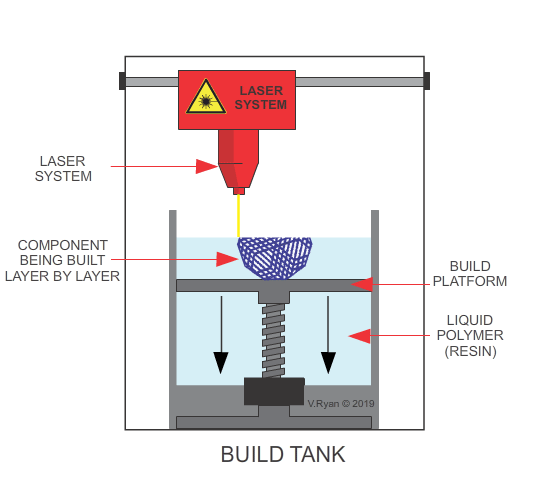 |
| |
| STEREOLITHOGRAPHY - SAMPLE PRODUCTS / COMPONENTS |
| |
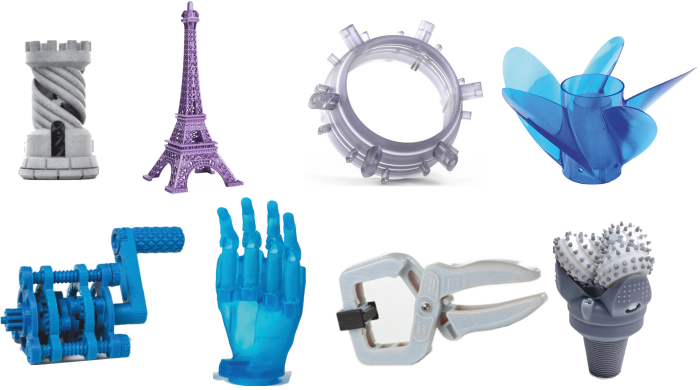 |
| |
|
|
| |
| ADVANTAGES OF STEREOLITHOGRAPHY |
Ideal for the manufacture of prototypes.
Efficient use of materials - no waste.
Cost effective for one-offs and low production numbers.
Solid and flexible components / products can be manufactured through this process.
Produces a smooth surface finish.
Can produce clear / transparent or opaque components.
A number of resin based components can be manufactured in the same tank, at the same time.
This process can manufacture products that cannot be manufactured through traditional engineering methods. |
| |
| DISADVANTAGES OF STEREOLITHOGRAPHY |
Only resin / polymer components / products can be manufactured.
The structural strength of the product / component is limited, due to the nature of resin / polymers.
The initial set-up of machinery (SLA machine) is expensive.
Resin has limited resistance to UV light (including sunlight). |
| |
| DESKTOP UPSIDE DOWN / INVERTED STEREOLITHOGRAPHY |
| |
| This is a process whereby the build table / platform is lowered into resin. A UV laser ‘hardens’ each layer, building layers downwards. It is the most common form of desktop stereolithography. |
| |
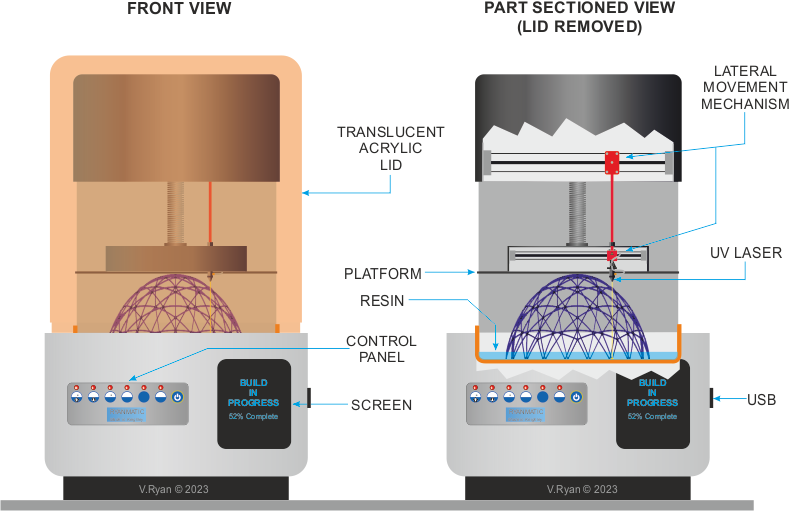 |
| |
| ANIMATION OF THE BASIC 'DOWNWARDS / INVERTED PROCESS |
| |
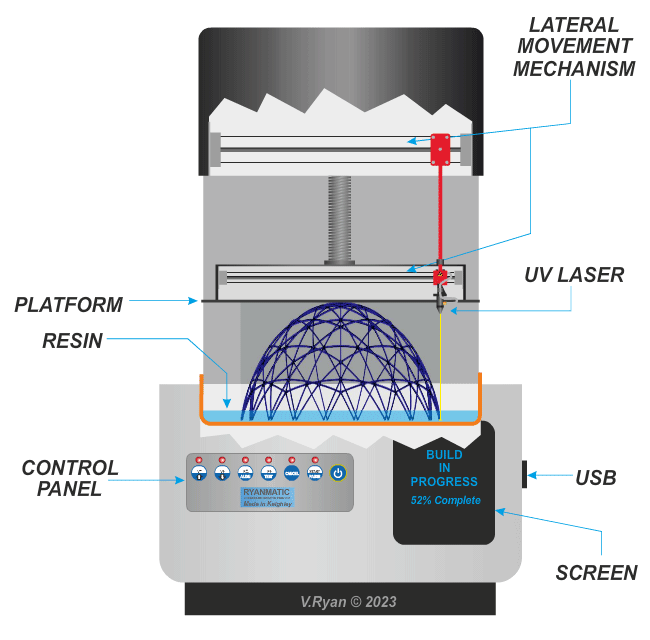 |
| |
|
|
| |
| DESKTOP STEREOLITHOGRAPHY - COMPARATIVE SIZE |
| |
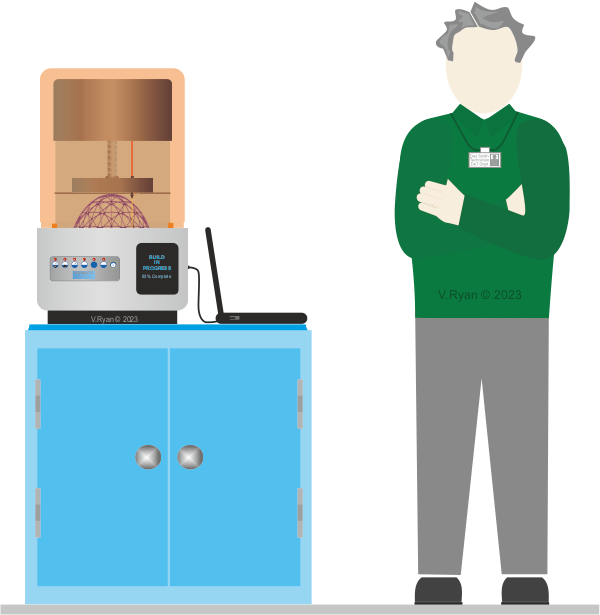 |
| |
| |
| CLICK HERE FOR CNC INDEX PAGE |
| |
|
| |
|




